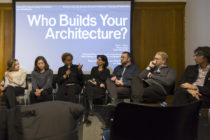Author Archives: wbya?
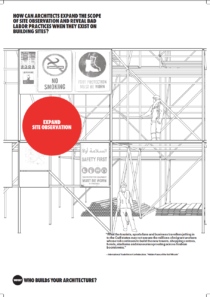
WBYA? Exhibition Posters
WBYA? exhibition posters for download
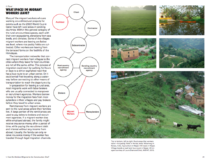
Who Builds Your Architecture?: A Critical Field Guide
View and download the PDF of Who Builds Your Architecture?: A Critical Field Guide

Who Builds Your Architecture?: A Critical Field Guide
View and download the PDF of Who Builds Your Architecture?: A Critical Field Guide

WBYA? installation at the Art Institute of Chicago
Whether majestic skyscrapers, eye-catching museums, or sprawling residential complexes, buildings emerge from intricate, lengthy processes of design and construction that involve a host of different actors, from architects and engineers to clients and banks to contractors and construction workers. These

WBYA? installation at the Art Institute of Chicago
Whether majestic skyscrapers, eye-catching museums, or sprawling residential complexes, buildings emerge from intricate, lengthy processes of design and construction that involve a host of different actors, from architects and engineers to clients and banks to contractors and construction workers. These
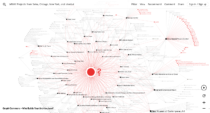
Global Networks of Architectural Labor
In collaboration with Graph Commons, Who Builds Your Architecture? maps connections between building projects in four cities: Chicago, New York, Istanbul, and Doha. The database uses the design and construction of building facades to trace diverse relationships between architects, clients,

Global Networks of Architectural Labor
In collaboration with Graph Commons, Who Builds Your Architecture? maps connections between building projects in four cities: Chicago, New York, Istanbul, and Doha. The database uses the design and construction of building facades to trace diverse relationships between architects, clients,
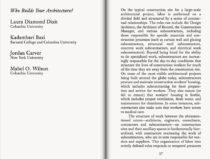
Asymmetric Labors
“On the typical construction site for a large-scale architectural project, labor is performed on a divided field and structured by a series of contractual relationships. The roles can include the Design Architect, the Architect of Record, the Construction Manager, and

Asymmetric Labors
“On the typical construction site for a large-scale architectural project, labor is performed on a divided field and structured by a series of contractual relationships. The roles can include the Design Architect, the Architect of Record, the Construction Manager, and
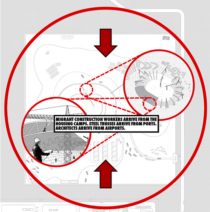
WBYA? contributes to e-flux journal#66: “Architecture as Intangible Infrastructure”
WBYA? contributes to e-flux Journal#66: “Architecture as Intangible Infrastructure“ (Issue Two), edited by Nikolaus Hirsch, Julieta Aranda, Brian Kuan Wood, Anton Vidokle. WBYA? maps the convergence of human rights issues with processes of architectural design and construction logistics by tracing the drafting

WBYA? contributes to e-flux journal#66: “Architecture as Intangible Infrastructure”
WBYA? contributes to e-flux Journal#66: “Architecture as Intangible Infrastructure“ (Issue Two), edited by Nikolaus Hirsch, Julieta Aranda, Brian Kuan Wood, Anton Vidokle. WBYA? maps the convergence of human rights issues with processes of architectural design and construction logistics by tracing the drafting
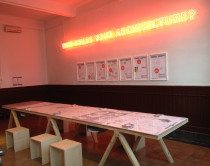
WBYA? installation at the 2nd Istanbul Design Biennial
The Global Network Drawing by WBYA? maps the implications of global architecture projects through in-depth analyses of globalized workforces, in particular migrant construction labor. The ethics around migrant labor and iconic global architecture became a matter of public debate in 2011

WBYA? installation at the 2nd Istanbul Design Biennial
The Global Network Drawing by WBYA? maps the implications of global architecture projects through in-depth analyses of globalized workforces, in particular migrant construction labor. The ethics around migrant labor and iconic global architecture became a matter of public debate in 2011
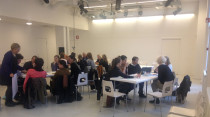
On the Effects of Globalization on Architectural Labor
WBYA? Workshop led by Kadambari Baxi at Iaspis Konstnärsnämnden September 26, 2014 Stockholm, Sweden On the Effects of Globalization on Architectural Labor

On the Effects of Globalization on Architectural Labor
WBYA? Workshop led by Kadambari Baxi at Iaspis Konstnärsnämnden September 26, 2014 Stockholm, Sweden On the Effects of Globalization on Architectural Labor
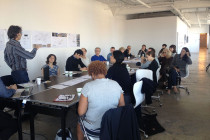
WORKshop 2: The Architect: From Office to Jobsite
Building off our first WORKshop, The Worker, this second session focuses directly on the architectural profession in order to better understand the issues linking architects, architectural practice and global workers and more importantly, how architects can address migrant labor rights

WORKshop 2: The Architect: From Office to Jobsite
Building off our first WORKshop, The Worker, this second session focuses directly on the architectural profession in order to better understand the issues linking architects, architectural practice and global workers and more importantly, how architects can address migrant labor rights
